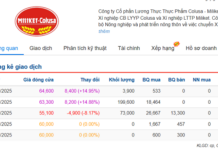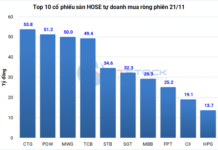
Illustrative image
According to Oilprice quoting data from the Energy Information Administration (EIA), in November, a shipment of 10,000 barrels of Russian crude oil was delivered to the US, despite the ban on Russian goods that the US imposed almost 2 years ago.
An EIA chart tracking Russian oil shows that the US suspended imports of Russian oil in April 2022. Before this time, the US imported several thousand barrels of Russian oil per month, with some years averaging monthly volumes ranging from 10,000 – 20,000 barrels.
A report by Global Witness revealed late last year that, despite the ban, significant amounts of refined fuel made from Russian crude oil were being brought into the US. According to the report, Russian crude oil was being shipped abroad, refined there, and then legally exported to the US.
India has become a processing center for Russian crude oil, which is then exported worldwide, including the European Union. The EU has also imported fuel made from Russian crude oil at the Lukoil oil refinery in Bulgaria due to a lack of sufficient alternative suppliers.
Another G7 member that placed an oil price cap on Russian exports in 2022 is Japan. However, the country continues to buy Russian crude oil despite the official restrictions. Not only that, but the US also allows this country to continue trading and above the price cap of $60/barrel agreed upon in mid-2022.
Meanwhile, another BRICS member, Brazil, has become another major buyer of Russian oil alongside India. According to the latest data, in 2023, Russia became the leading supplier of diesel oil to Brazil, with exports of other types of fuel also increasing significantly.
Financial Times reported in early February that in 2023, Brazil’s diesel oil imports from Russia increased sharply by 6,000% to 6.1 million tons, from a previous 101,000 tons a year earlier.
In late December 2023, Russian Deputy Prime Minister Andrei Belousov said that Russia’s crude oil exports in 2023 exceeded 7% compared to the 2021 figures – the time before the conflict in Ukraine, reaching a total of 250 million tons. Currently, Russia continues to supply energy to friendly countries.
However, the supply to unfriendly countries has decreased by 71.4% compared to 2021. The decrease with the European Union (EU) is 77.7%.
The Russian Ministry of Finance also stated that Russia’s revenue from crude oil sales nearly doubled during the period of April – October, despite international pressure and less positive forecasts.
According to Oilprice, FT




































